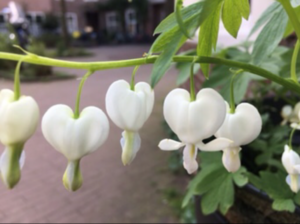Tag: compassion
Nurture peace inside and out with this loving kindness practice
Earlier this week, I closed another rewarding 8-week MBSR journey with a beautiful group of people. It was my last mindfulness session for the year and the last meditation practice I guided was a loving kindness practice. I recorded it during our session and wanted to share it with you. (please note that as this is a live recording with a large group in the room, the sound quality isn’t perfect, there is some background noise but I am ok with imperfect, hope you are too?).
With the holiday season approaching, often connected to peace, joy and shared moments with loved ones, don’t you agree it is the perfect opportunity to nurture and spread some love and kindness?
Why practice Loving-Kindness?
If you are unfamiliar with this practice, below is a bit more context:
Loving-Kindness is originally a Buddhist practice (sometimes referred to as metta-meditation). It involves mentally sending kindness and warmth towards others by silently repeating traditional phrases (or mantras).
Loving Kindness is one of the most direct routes to happiness. It is a powerful practice in dispelling negative emotions such as anxiety and depression. It encourages us to be less self-absorbed. Furthermore, it actually makes us more inclined to react positively to others (there is plenty of research to support this).
How do you practice Loving-Kindness?
In this practice, we begin by sending compassion to ourselves. Developing self-compassion is an essential first step to allow us in turn to become a more compassionate person. After that, we can express this compassion increasingly outwardly.
If we feel inadequate or insecure, we harm ourselves by beating ourselves up. Furthermore, we also tend to harm others around us, either by taking out our anger, irritation or frustrations on them. Sometimes by needing or expecting them to love us in ways that we are not able to love ourselves. On the other hand, if we suppress our feelings, we keep ourselves from really, truly connecting with others in a meaningful way as we are too absorbed with our own ill-being.
Mindfulness and self-compassion can free us from past painful and self-limiting beliefs. Learning to open our heart to the loving-kindness within us and in the world around us will eventually help us live more freely and fearlessly.
“We cannot achieve world peace without first achieving peace within ourselves … inner peace. In an atmosphere of hatred, anger, competition and violence no lasting peace can be achieved. These negative and destructive forces must be overcome by compassion, love and altruism which are the essential teachings of the Buddha.” – Dalia Lama
8 foundational attitudes of mindfulness …and life really:)
Mindfulness is not just about paying attention but how we pay attention, with what qualities of mind.
Cultivating certain attitudes of mind is helpful in training mindfulness and can help you get the most out of your practice, giving some touch-points to refer to when obstacles arise. Each of these attitudes relies on the others, so working on one enhances them all. These attitudes provide a kind of compass with which to approach mindfulness, holding them in mind, reflecting upon them, and cultivating them will nourish, support and strengthen your practice and gradually change your life.
- Non-judging
We are constantly generating judgments about our experiences, labeling them as good, bad or neutral dependent on the way they make us feel. Non-judging invites us to become aware of the constant stream of judging in our minds, and not get caught up in it, learning to take a step back to become an impartial witness to our experience.
- Patience
Not rushing the present, being open and accepting of each moment, allowing oneself room to have the experience that is unfolding at any given moment, understanding that sometimes things cannot be forced and will happen in their own time. We don’t have to fill up our moments with activity and more thinking to make them richer.
- Beginner’s mind.
The quality of a beginner’s mind, meaning a mind willing to see everything as if for the very first time, is very important to bring to the practice. Regardless of how many times we have experienced something or someone or a meditation, we need to free ourselves of our past experiences and understand that no moment is the same, every moment is unique and filled with unique possibilities.
- Trust
Learning to trust one’s feelings and intuition rather than looking to outside world for guidance is another key pillar of mindfulness practice.
- Non-Striving
Non-striving is about embracing ‘non-doing’ and not being focused on achieving specific goals through meditation. This is difficult as human nature is to do things for a purpose, to get somewhere but during meditation this can be an obstacle. It is common to think that by letting go of striving, we may be losing our “edge”, yet when we can relax into things as they are this change in attitude actually enhances openness, creativity and happiness. There is no goal other than to be fully oneself.
- Letting go or ‘’non-attachment’’
As we meditate, we learn to avoid our impulse to grasp pleasant thoughts and push away unpleasant thoughts, just by watching them and letting them be without getting caught up in them.
- Acceptance
Acceptance is a willingness to see things as they actually are in the present moment. In meditation practice this means being with each moment fully, trying not to impose our ideas about what we should be feeling or thinking on our experience but just being open and accepting to what is rather than wanting things to be different. We sometimes tune out from negative feelings as a way to defend ourselves (“experiential avoidance”) which may be helpful in short term but over time these bounce back at us. We should not ignore, resist or fight negative. Our experiences are here to teach us something. We are cultivating trying to observe all experiences, whether negative or positive.
- Kindness
Mindfulness practice is ultimately about kindness, towards ourselves and others. The quality of kindness is cultivated as an antidote to the difficult mind-states such as anger, fear, envy, greed, judgment, etc. Kindness allows to dissolve fears, guilty feelings, anxieties and stresses that lead to exhaustion and chronic discontent. We cultivate kindness over and over moving in the direction of greater compassion and acceptance. Kindness is not only a good quality in itself that leads to more peace and well-being for ourselves and others, it also leads us to clearer thinking and a better, more productive way of living and working.,
In addition to these attitudes, a strong commitment to work on oneself and enough self-discipline to persevere in the process are essential to developing a strong meditation practice and a high degree of mindfulness.
A personal vision
Finally, practicing alone isn’t sufficient, one needs to have a personal vision of what they want for themselves. Many people meditate to attain peace of mind, happiness. This is probably what most reasonable human beings desire for themselves. However we probably all have different visions of what that means, how that translates, what one believes is most important to be their best self, at peace with oneself.

